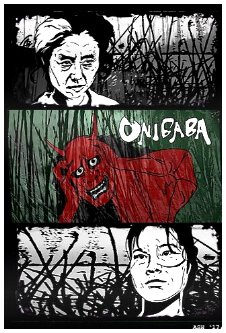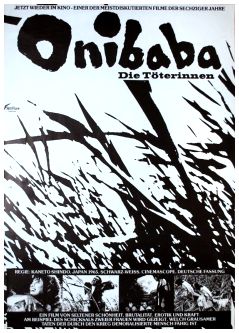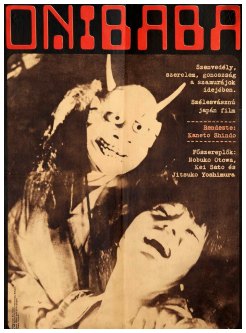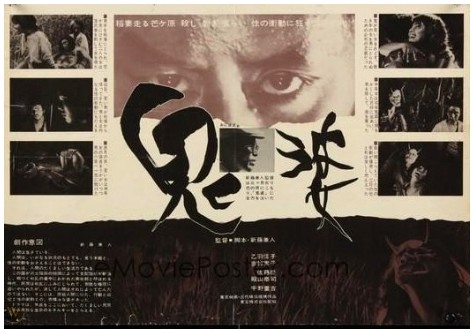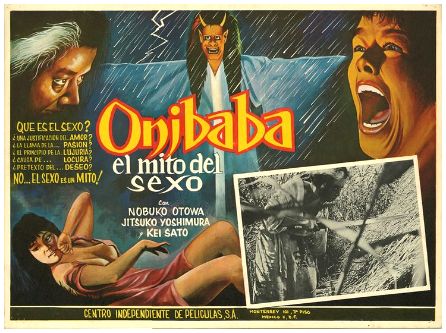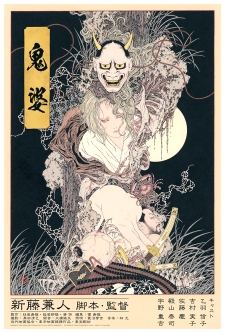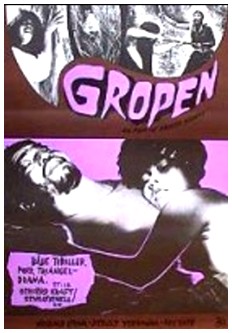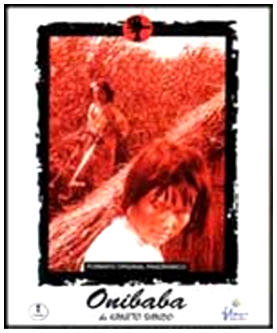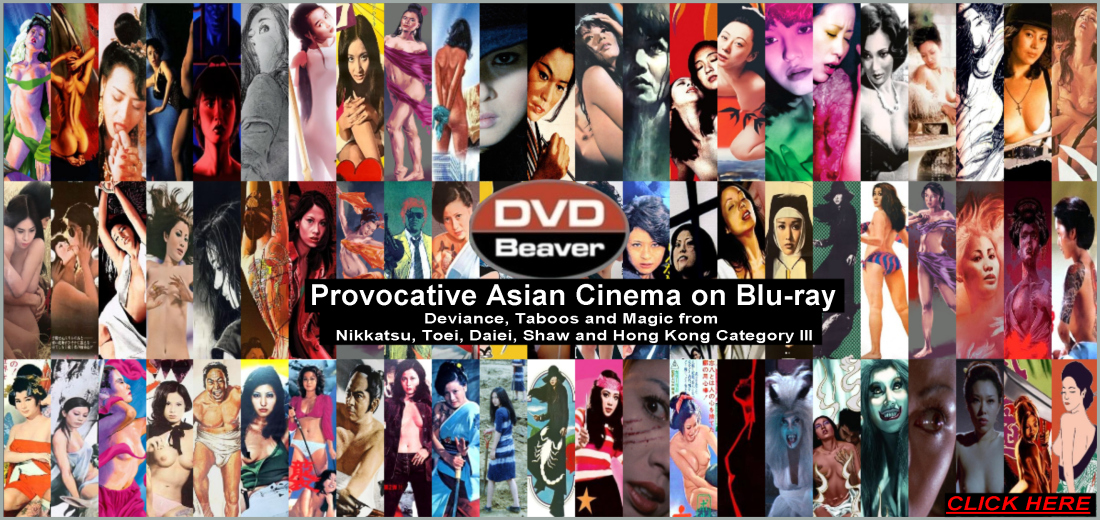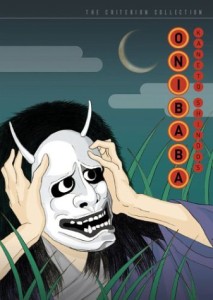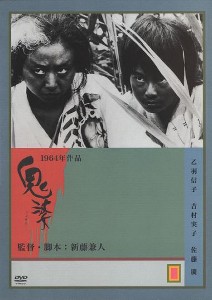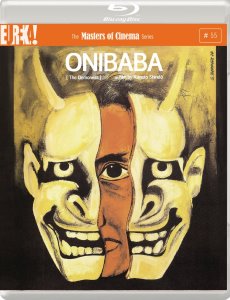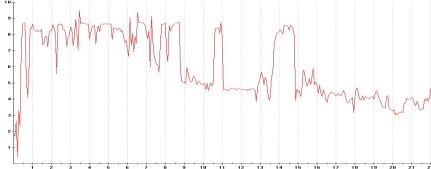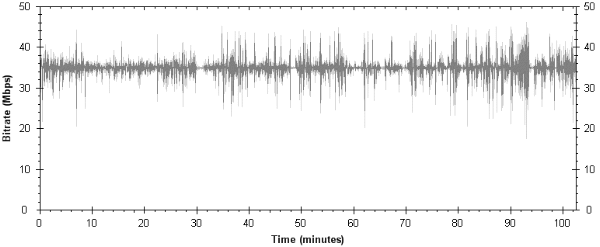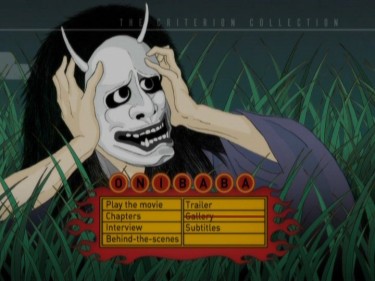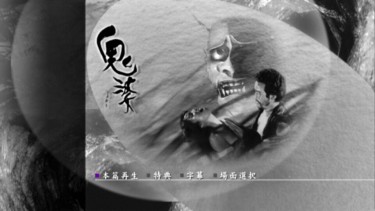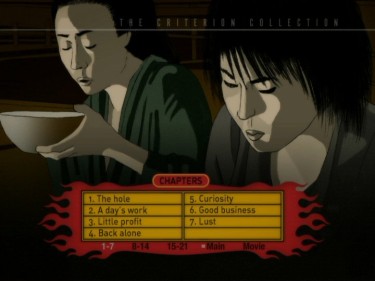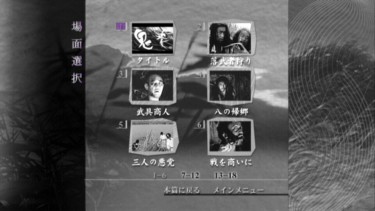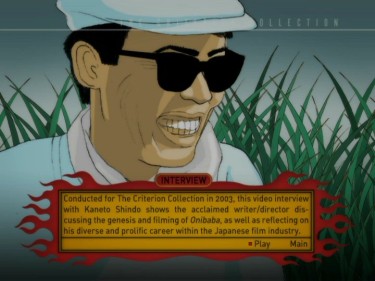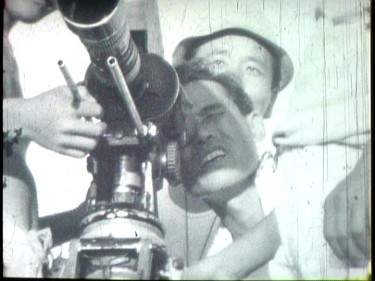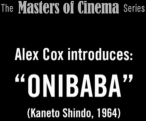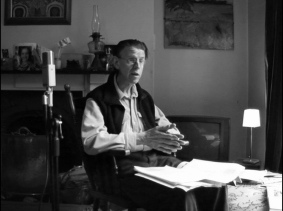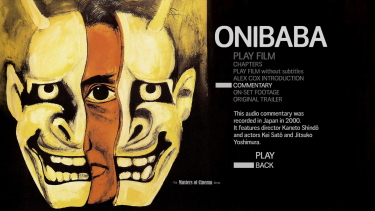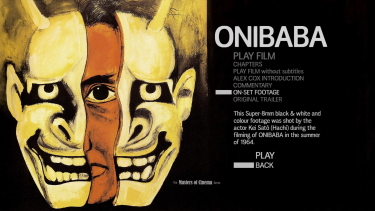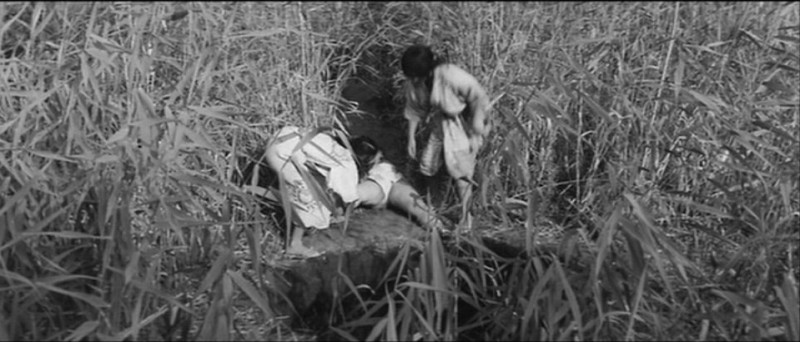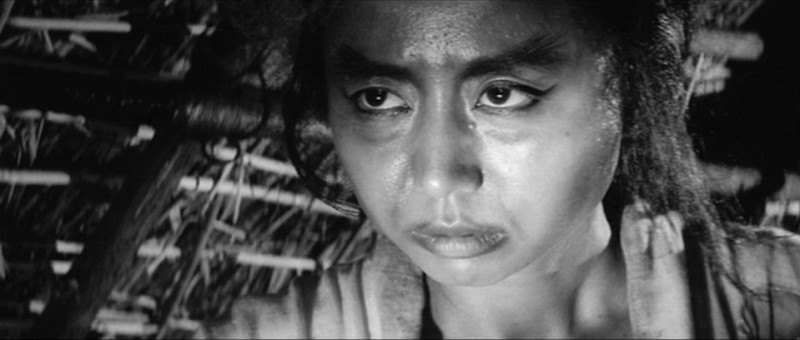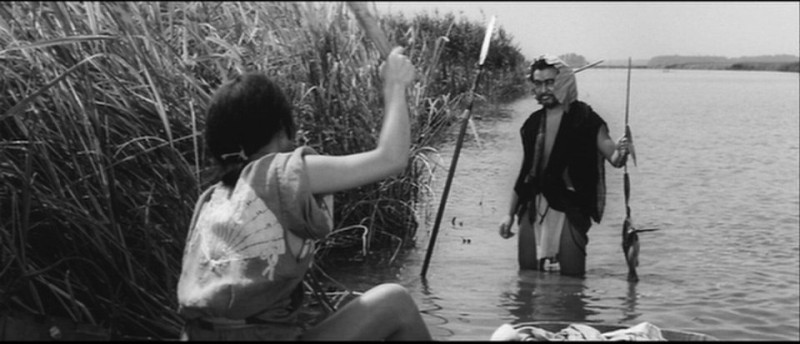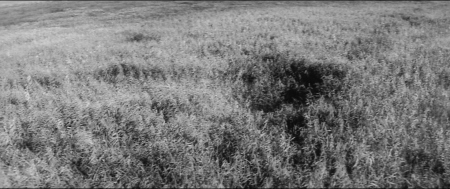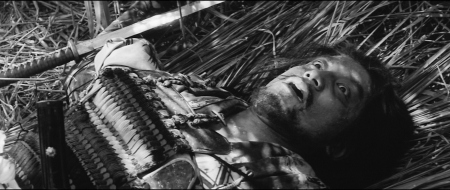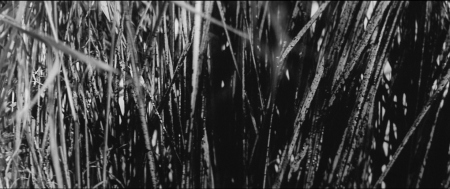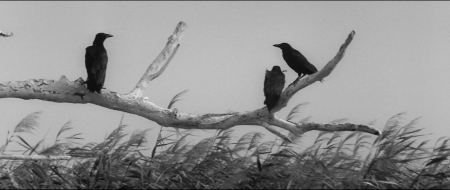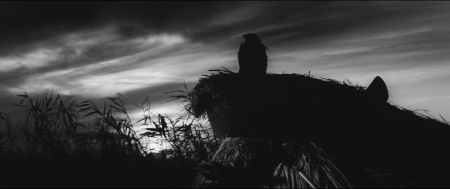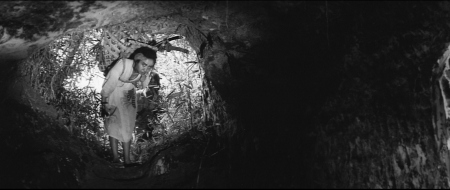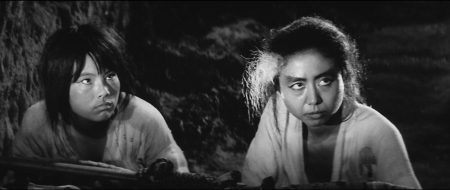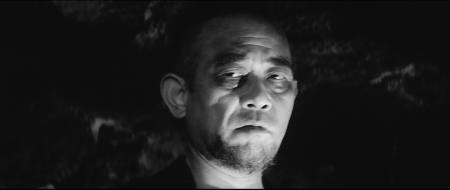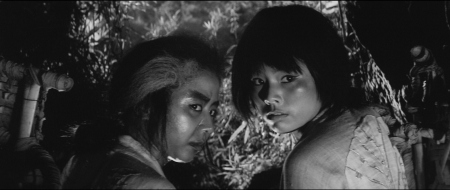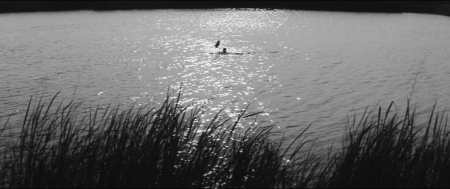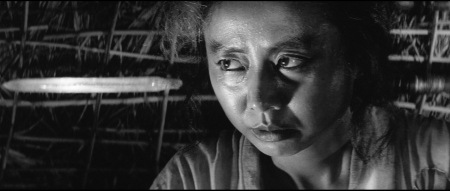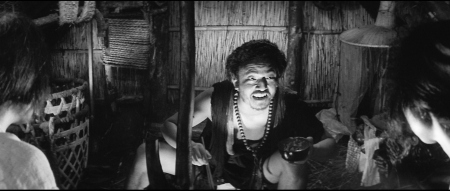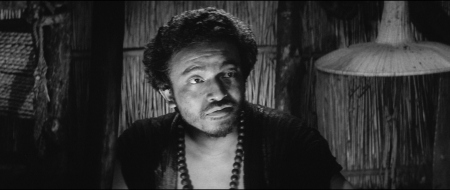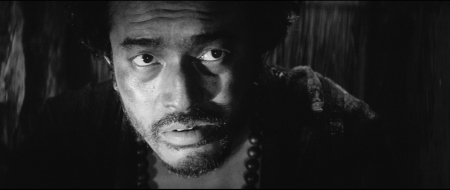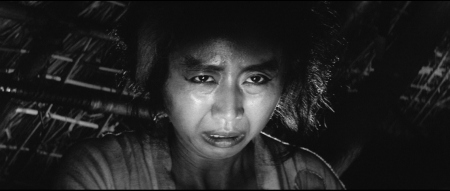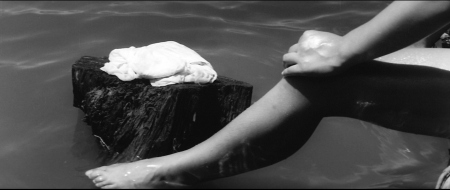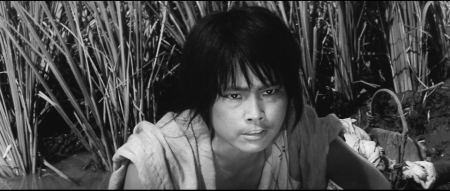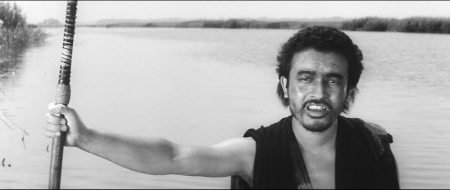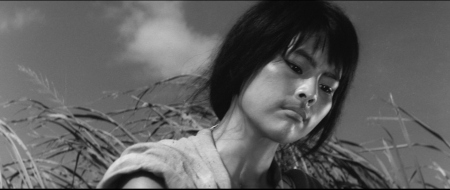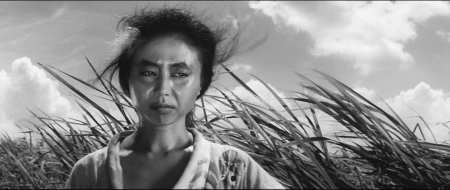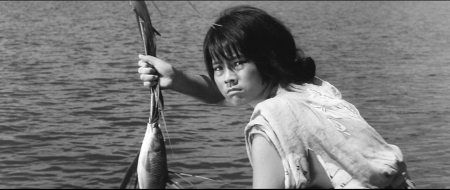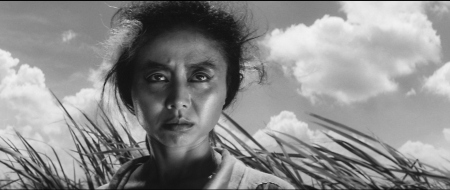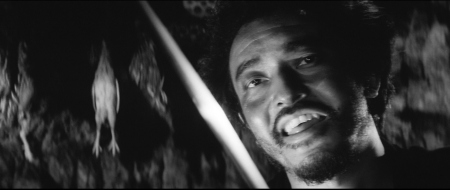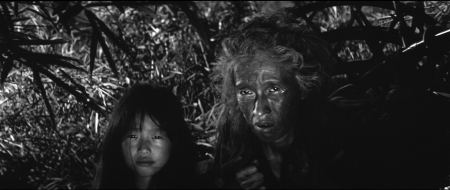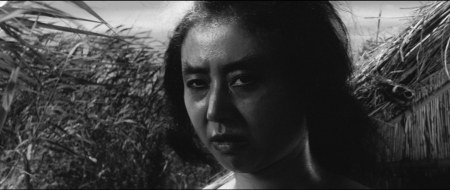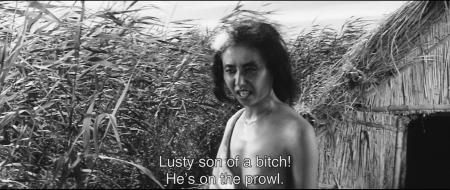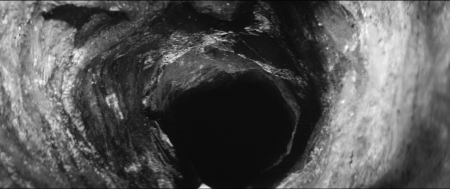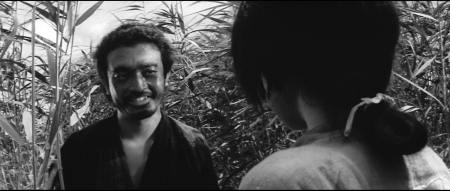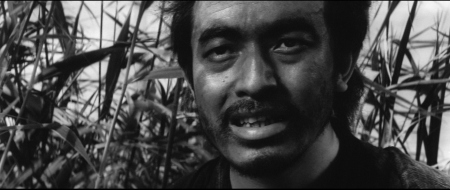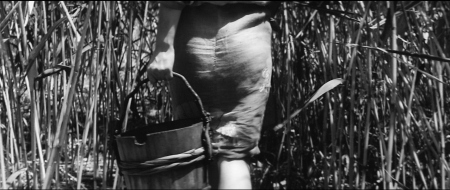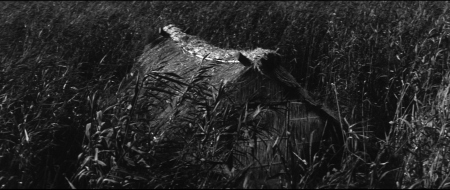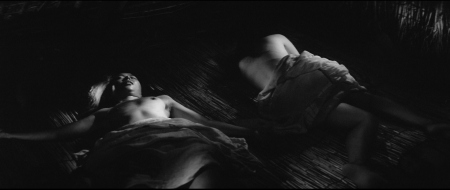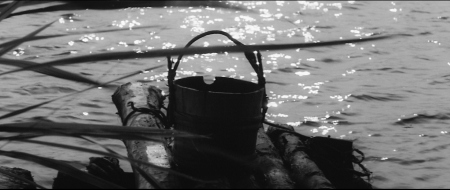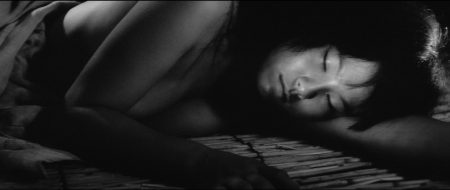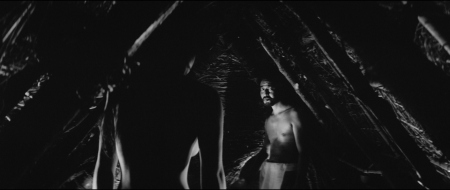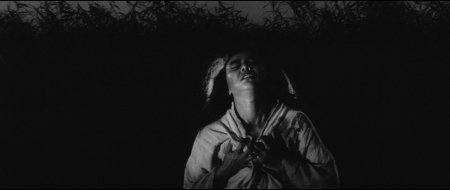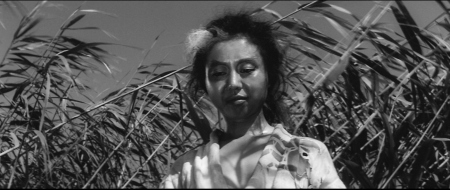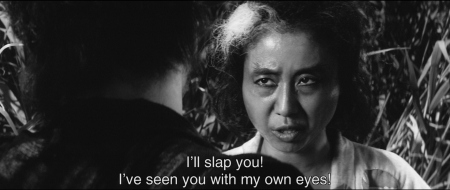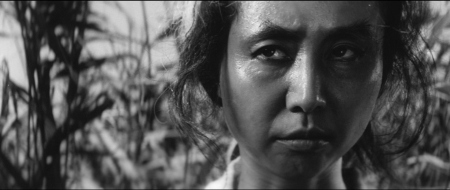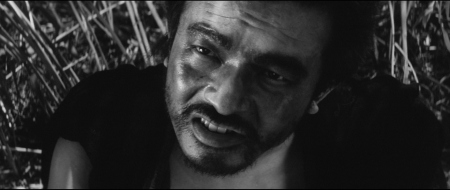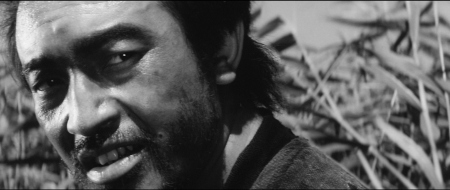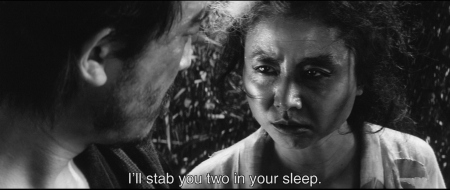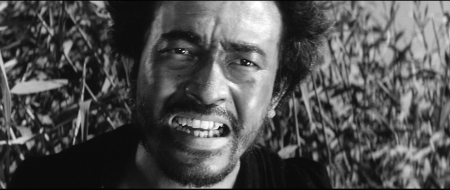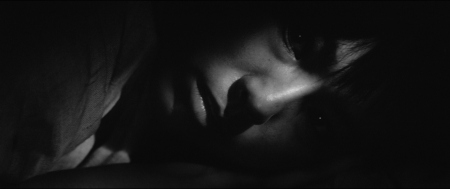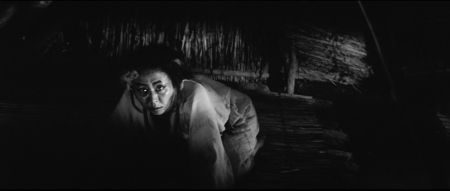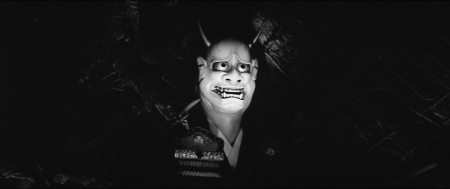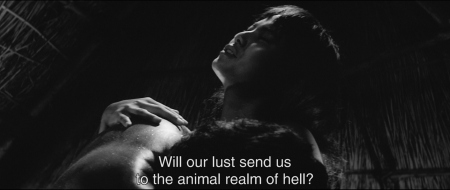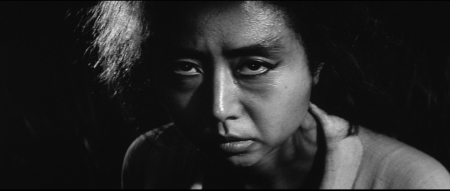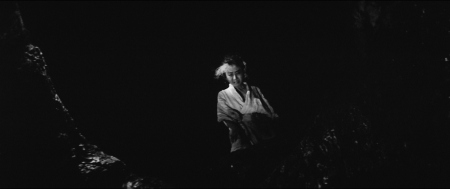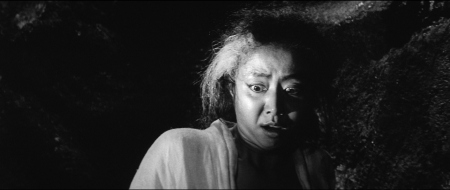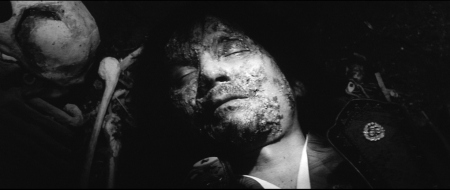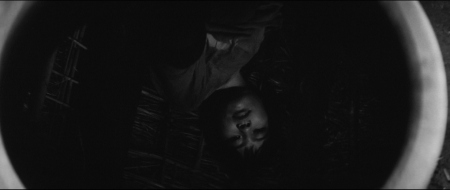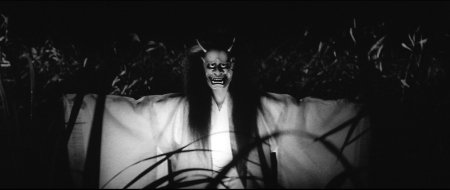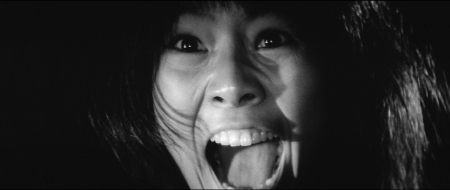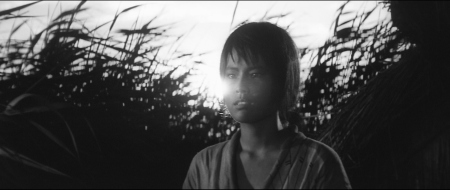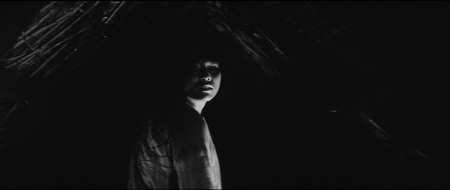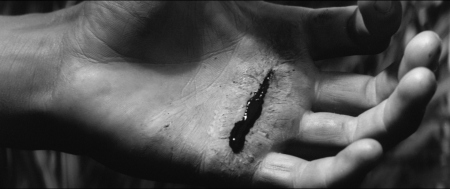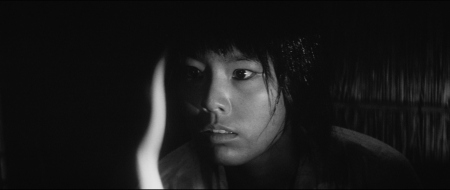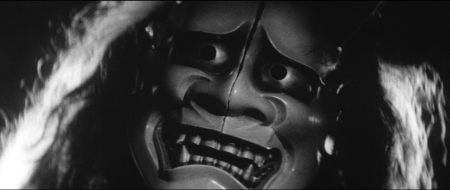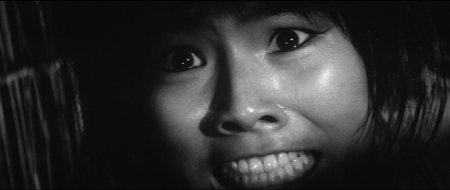|
Firstly, a massive thank you to our Patreon supporters. Your generosity touches me deeply. These supporters have become the single biggest contributing factor to the survival of DVDBeaver. Your assistance has become essential.
What do Patrons receive, that you don't?
1)
Our
weekly
Newsletter
sent to your Inbox every
Monday morning!
Please consider keeping us in existence with a couple of dollars or more each month (your pocket change!) so we can continue to do our best in giving you timely, thorough reviews, calendar updates and detailed comparisons. Thank you very much. |
![]()
![]()

![]()
![]()
|
Search DVDBeaver |
S E A R C H D V D B e a v e r |
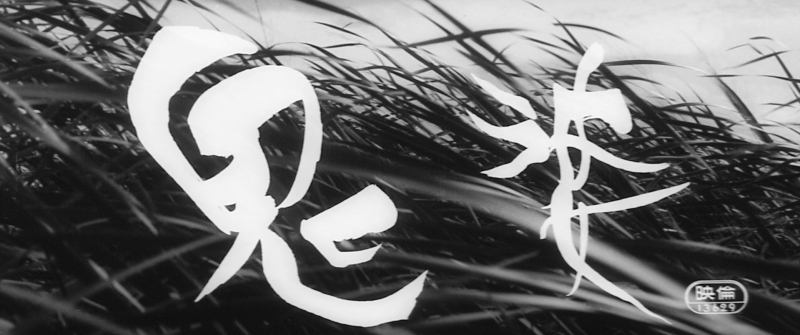
(aka "Onibaba" or "The Demon, "Devil Woman" or " The Hole" or "The Ogress" or "Demon Hag" or "The Witch" )
directed
by Kaneto Shindō
Japan
1964
|
Deep within the wind-swept marshes of war-torn medieval Japan, an impoverished mother and her daughter-in-law eke out a lonely, desperate existence. Forced to murder lost samurai and sell their belongings for grain, they dump the corpses down a deep, dark hole and live off of their meager spoils. When a bedraggled neighbor returns from the skirmishes, lust, jealousy, and rage threaten to destroy the trio’s tenuous existence, before an ominous, ill-gotten demon mask seals the trio’s horrifying fate. Driven by primal emotions, dark eroticism, a frenzied score by Hikaru Hayashi, and stunning images both lyrical and macabre, Kaneto Shindo’s chilling folktale Onibaba is a singular cinematic experience. ****
Kaneto Shindo, one of Japan's most prolific directors,
received his biggest international success with the release of Onibaba in
1964. Its depiction of violence and graphic sexuality was unprecedented at the
time of release. Shindo managed — through his own production company Kindai Eiga
Kyokai — to bypass the strict, self-regulated Japanese film industry and pave
the way for such films as Yasuzo Masumura's Mojuu (1969) and Nagisa Oshima's
Ai
no corrida (1976). |
Posters
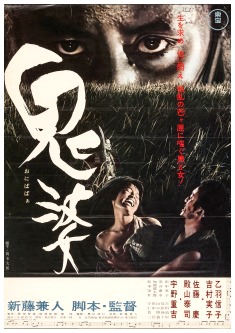 |
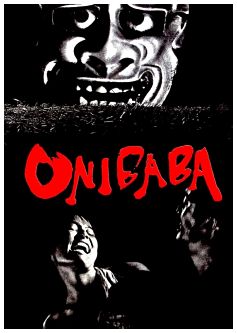 |
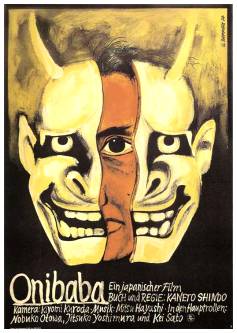 |
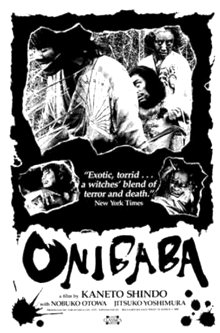 |
Theatrical Release: November 21st, 1964
Reviews More Reviews DVD Reviews
Comparison:
|
Eureka - Region 2 - PAL vs. Criterion - Region 0 - NTSC vs. Asmik - Region 2 - NTSC vs. Masters of Cinema - Region 'B' - Blu-ray vs. Criterion - Region 'A' - Blu-ray |
Big thanks to Mark Wilson of NicheFlix for Asmik DVD Screen Captures!
| Box Covers |
 |
|
|
|
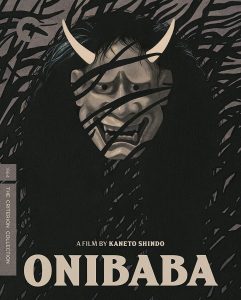
BONUS CAPTURES: |
| Distribution |
Eureka Masters of Cinema Region 2 - PAL |
Criterion Collection - Spine # 226 - Region 0 - NTSC |
Pioneer / Asmik Ace Region 2 - NTSC |
Masters of Cinema - Spine #55 Region 'B' - Blu-ray |
Criterion Collection - Spine # 226 Region 'A' - Blu-ray |
| Runtime | 1:38:42 (4% PAL Speed-up) | 1:42:36 | 1:42:18 | 1:42:29.143 | 1:42:54.585 |
| Video |
2.35:1 Aspect Ratio
16X9 enhanced |
2.35:1 Aspect Ratio
16X9 enhanced |
2.35:1.00 Aspect Ratio
16X9 enhanced |
1080P Dual-layered Blu-rayDisc Size: 37,119,544,355 bytes Feature: 30,997,276,032 bytes Video Bitrate: 34.99 MbpsCodec: MPEG-4 AVC Video |
1080P Dual-layered Blu-rayDisc Size: 47,623,194,077 bytes Feature: 30,840,834,048 bytesVideo Bitrate: 35.56 MbpsCodec: MPEG-4 AVC Video |
|
NOTE: The Vertical axis represents the bits transferred per second. The Horizontal is the time in minutes. |
|||||
| Bitrate:
Eureka
|
|
||||
| Bitrate:
Criterion
|
|
||||
| Bitrate:
Asmik Ace
|
|
||||
| Bitrate Masters of Cinema: Blu-ray |
|
||||
| Bitrate Criterion: Blu-ray |
|
||||
| Audio | Japanese (Dolby Digital 2.0 Mono) | Japanese (Dolby Digital 2.0 Mono) |
Japanese (Dolby Digital 2.0 Mono) |
LPCM Audio Japanese 1536 kbps 2.0 / 48 kHz / 1536 kbps /
16-bit LPCM Audio Japanese 1536 kbps 2.0 / 48 kHz / 1536 kbps / 16-bit |
LPCM Audio Japanese 1152 kbps 1.0 / 48 kHz / 1152 kbps / 24-bit Dolby Digital Audio Japanese 192 kbps 1.0 / 48 kHz / 192 kbps / DN -31dB |
| Subtitles | English, None | English, None | English, Japanese and none | English, None (and English for commentary) | English, None (and English for commentary) |
| Features |
Release Information: Studio: Eureka Video Aspect Ratio: Original aspect Ratio 2.35:1
Special Features |
Release Information: Studio: Criterion Aspect Ratio: Original aspect Ratio 2.35:1
Special Features |
Release Information: Studio: Asmik Ace (Japan) / Kindai Eiga Kyokai Ltd Aspect Ratio: Widescreen letterbox - 2.35:1
NOTE: Extras do not have English subtitles. DVD
Release Date:10 / 08 / 2001 |
Release Information: Studio: Eureka Video Aspect Ratio: Original aspect Ratio 2.35:1 1080P Dual-layered Blu-rayDisc Size: 37,119,544,355 bytes Feature: 30,997,276,032 bytes Video Bitrate: 34.99 MbpsCodec: MPEG-4 AVC Video
Special Features Transparent Blu-ray Case Chapters: 12 |
Release Information: Studio: Criterion Aspect Ratio: Original aspect Ratio 2.35:1 1080P Dual-layered Blu-rayDisc Size: 47,623,194,077 bytes Feature: 30,840,834,048 bytesVideo Bitrate: 35.56 MbpsCodec: MPEG-4 AVC Video
Special Features |
| Comments: |
NOTE: The below Blu-ray captures were taken directly from the Blu-ray disc. ADDITION: Criterion Blu-ray (October 2021): Criterion have transferred Kaneto Shindō's Onibaba to Blu-ray. It is cited as being a "Restored high-definition transfer". Like their own 2004 DVD it is slightly cropped beside both the Masters of Cinema and Asmik Ace transfers. It is egregiously on the side and top edges and less so at the bottom of the frame. The Criterion 1080P is darker and a bit thicker looking very film-like. I had no issues with the HD presentation on my system - contrast was pristine and I was extremely pleased with my viewing. It is on a dual-layered disc with a max'ed out bitrate.NOTE: We have added 60 more large resolution Blu-ray captures (in lossless PNG format) for DVDBeaver Patrons HERE
On their
Blu-ray,
Criterion use a linear PCM mono track (24-bit) in the
Japanese language. Onibaba
has a brilliant score by
Hikaru
Hayashi (Irezumi,
Death
By Hanging,
Voice Without a Shadow,
Blind Beast,
Kuroneko,
The Naked Island) sounding
eclectic and diverse at times with Taiko drumming combined with jazz. The
authentically flat, uncompressed transfer supports the film amazingly well.
Criterion offer optional
English subtitles (for the Japanese-language commentary too) on their
Region 'A'
Blu-ray.
The Criterion
Blu-ray
Kaneto Shindō's Onibaba is another masterpiece from the director
that brought us
The Naked Island, and
Kuroneko. He frequently depicted the fate of women including
their sexual nature. the title Onibaba can be translated as "Demon
Hag" or "The Witch". It has elements of both social criticism
and an eerie horror. Criterion were certainly beaten to the punch with
their Blu-ray
transfer - that still provides a strong presentation having differences
from the 8-year old UK Blu-ray. The
included commentary and other extras are a welcome addition. Our highest
recommendation to region 'A'-locked world cinephiles!
*** ADDITION: Masters of Cinema - Region 'B' - Blu-ray (February 2013): Sweet! What a great film to have in 1080P. Onibaba is so brilliantly shot some of the sequences are ravishing via Masters of Cinema's dual-layered Blu-ray. The scope effect seems maximized the only negative. This coincides with a flatness and waxiness that I, in no way, found detrimental. The layered contrast brightens the overall visuals and darkens the black levels. It also brings up detail. I thoroughly enjoyed the HD presentation - it accentuated the atmosphere which is such an integral part of the Onibaba film experience.
The linear PCM audio at 1536 kbps benefits the wild Hikaru Hayashi score. The lossless rendering ratchets up the depth a full notch. It sounds quite impressive. There are optional English subtitles on the region 'B'-locked Blu-ray.
The supplements are duplicated from the 2005 MoC DVD with the commentary, Alex Cox intro, booklet but we lose the superfluous 'art gallery'.
Onibaba is an amazing film to have in 1080P and despite some minor, perceived, digitization issues - I thoroughly enjoyed the Blu-ray experience. It should blow away most film fans with its a/v. Recommended! *** ADDITION: Eureka - Region 2 - PAL (August 2005): I will try to be brief as I feel I could talk about these three release enough to fill 3 of these web pages. Bottom line: the Eureka is the one to own, it, like the Asmik, is sharper than the Criterion and has better subtitle translations than the Asmik. It also boasts the best extras with a Full-length director's audio commentary by director Kaneto Shindo and the stars of the film, Kei Sato, and Jitsuko Yoshimura (in Japanese with removable subtitles), 8mm footage (40-minutes) shot on location by lead actor Kei Sato and a 24-page booklet with a new essay by Doug Cummings, an English translation of the original short Buddhist fable that inspired the film and a statement from writer/director Kaneto Shindo about why he made Onibaba. ***
It appears in direct comparison to the Asmik Ace DVD that the Criterion has some cropping on both edges (especially the left) as well as the top. The Asmik image is marginally sharper than the Criterion which is darker, although I think the differences are acceptably negligible in image quality - the cropping keeps the Asmik in the lead. The Criterion wins the Extras only as they have English subtitles. This is a pick'em, but true image purists will want to get the Asmik Ace - fans of the film may want the Criterion for the Extras. |
Recommended Reading for Japanese Film Fans (CLICK COVERS or TITLES for more information)
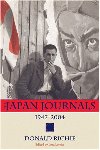 |
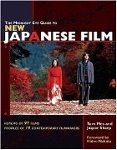 |
 |
 |
 |
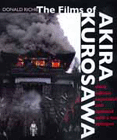 |
 |
 |
|
The Japan Journals : 1947-2004, by Donald Richie |
The Midnight Eye Guide to New Japanese Film |
Kon Ichikawa (Cinematheque Ontario Monographs) by James Quandt, Cinematheque Ontario |
Shohei Imamura (Cinematheque
Ontario Monographs, No. 1) |
Eros Plus Massacre: An
Introduction to the Japanese New Wave Cinema
(Midland Book, Mb 469) |
The Films of Akira Kurosawa by Donald Ritchie |
Ozu by Donald Richie |
A Hundred Years of Japanese Film by Donald Richie |
Check out more in "The Library"
Menus
(Eureka - MOC - Region 2 - PAL)
 |
 |
 |
 |
|
|
|
|
|
|
(Criterion
- Region 0 - NTSC - LEFT vs. Asmik Ace - Region 2 - NTSC - RIGHT)
|
|
|
|
|
|
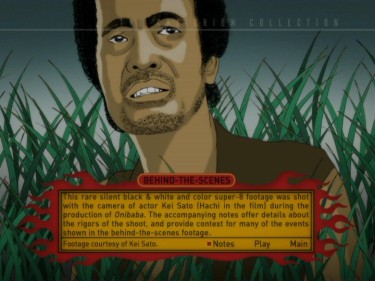 |
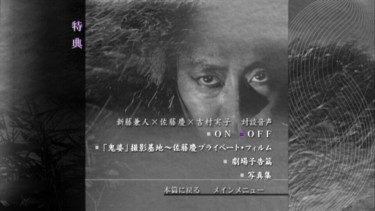 |
|
|
|
Masters of Cinema - Spine #55
Region 'B' - Blu-ray
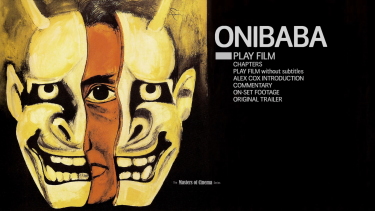 |
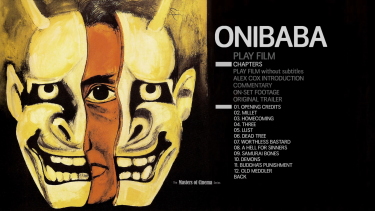 |
|
|
|
|
|
|
Criterion - Region 'A' -
Blu-ray
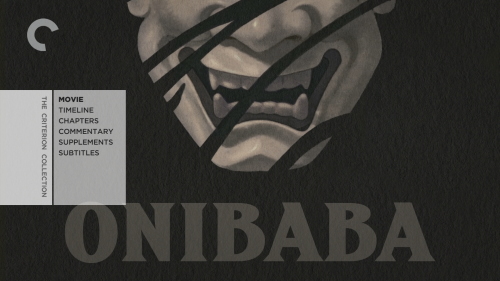 |
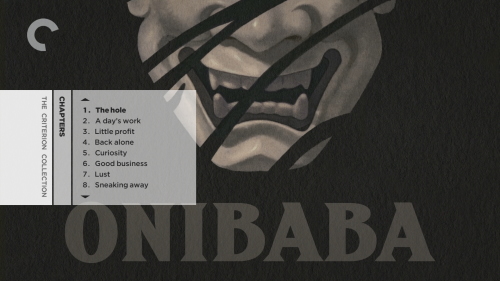 |
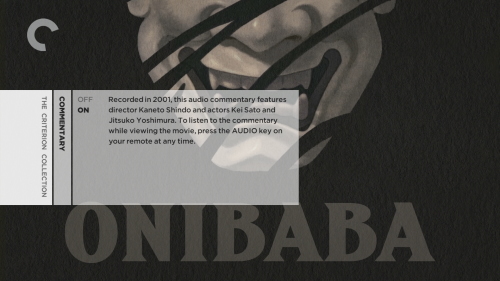 |
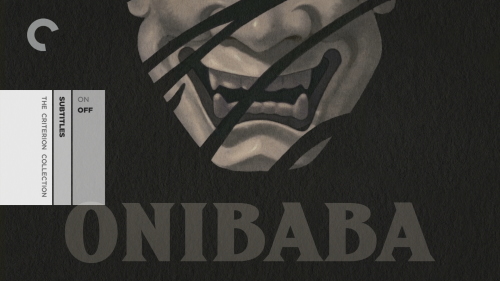 |
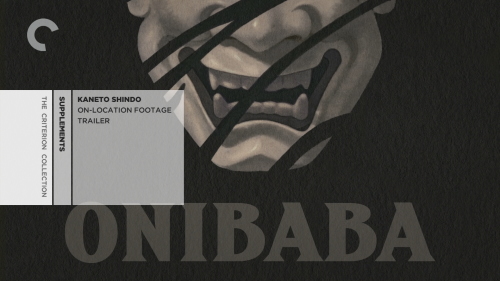 |
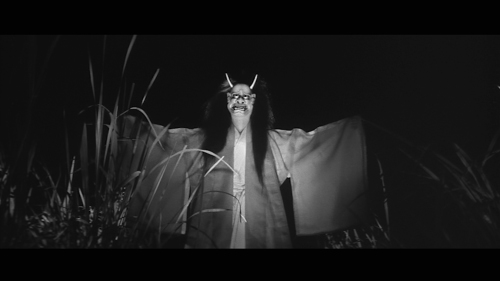 |
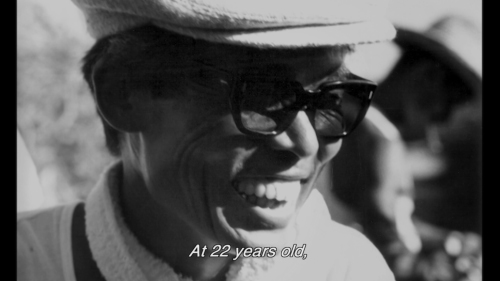 |
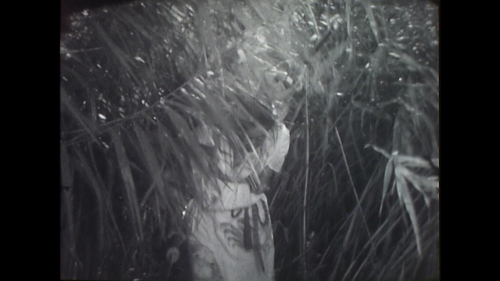 |
CLICK EACH BLU-RAY CAPTURE TO SEE ALL IMAGES IN FULL 1920X1080 RESOLUTION
Subtitle Samples
|
1) Eureka - MOC - Region 2 - PAL TOP 2) Criterion - Region 0 - NTSC - SECOND3) Asmik Ace - Region 2 - NTSC - THIRD 4) Masters of Cinema - Region 'B' - Blu-ray FOURTH 5) Criterion - Region 'A' - Blu-ray BOTTOM |
 |
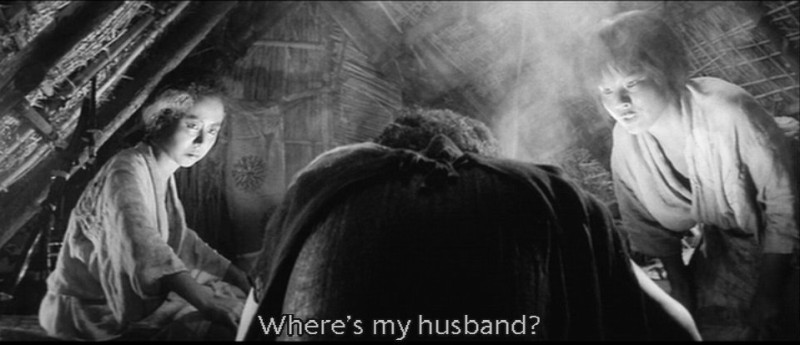 |
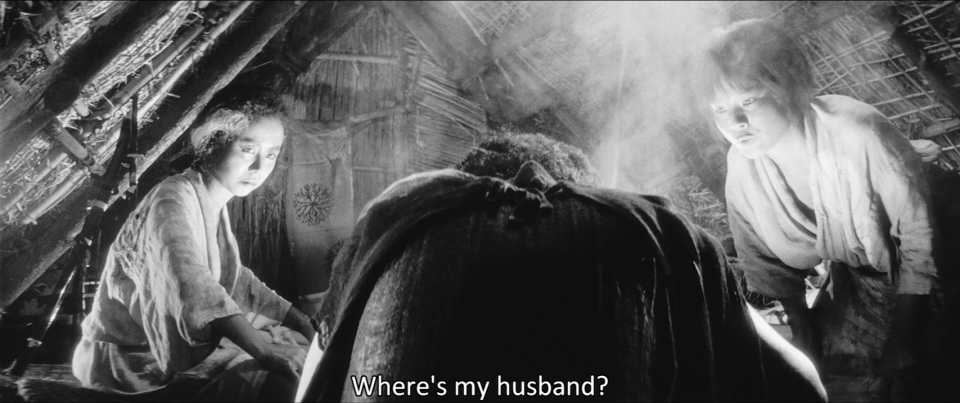 |
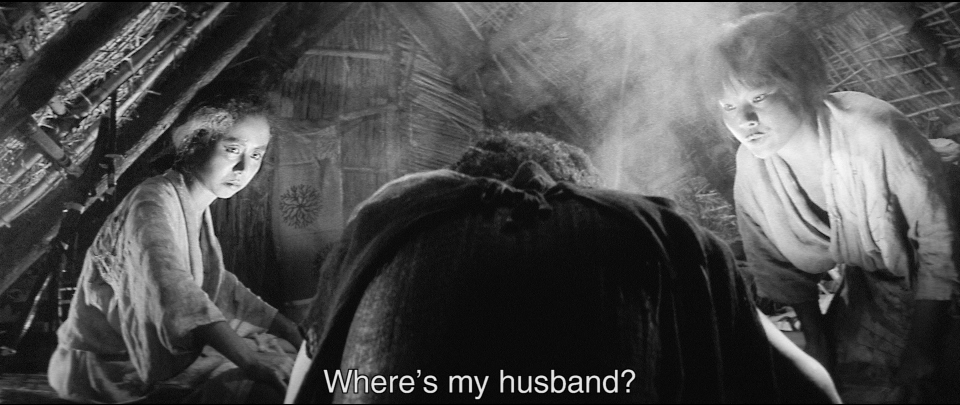 |
Screen Captures
|
1) Eureka - MOC - Region 2 - PAL TOP 2) Criterion - Region 0 - NTSC - SECOND3) Asmik Ace - Region 2 - NTSC - THIRD 4) Masters of Cinema - Region 'B' - Blu-ray FOURTH 5) Criterion - Region 'A' - Blu-ray BOTTOM |
 |
|
|
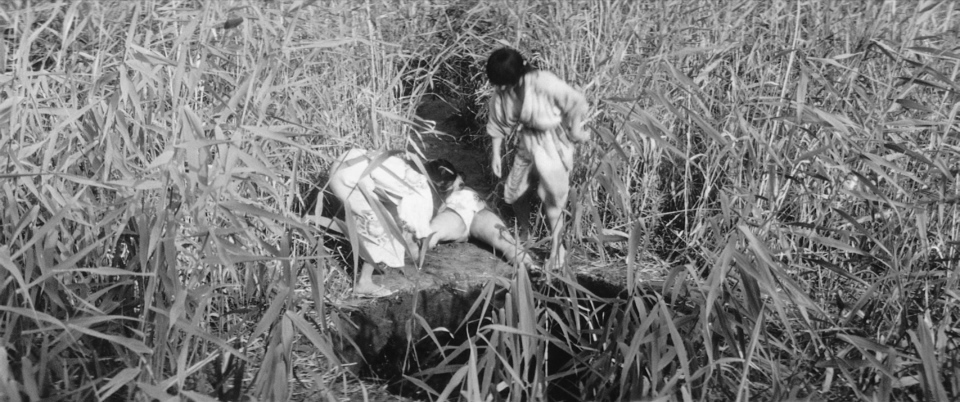 |
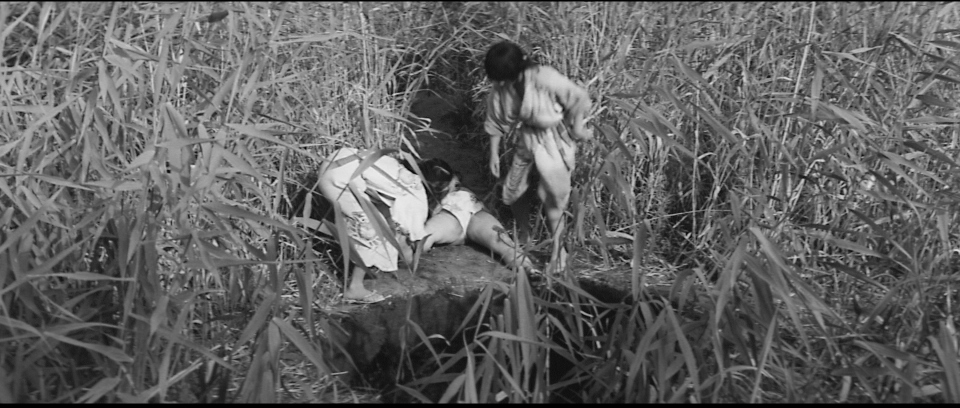 |
|
1) Eureka - MOC - Region 2 - PAL TOP 2) Criterion - Region 0 - NTSC - SECOND3) Asmik Ace - Region 2 - NTSC - THIRD 4) Masters of Cinema - Region 'B' - Blu-ray FOURTH 5) Criterion - Region 'A' - Blu-ray BOTTOM |
 |
|
|
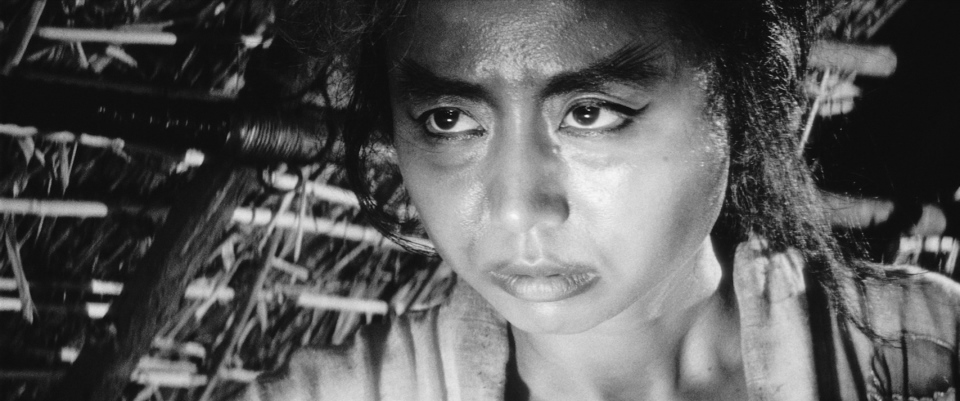 |
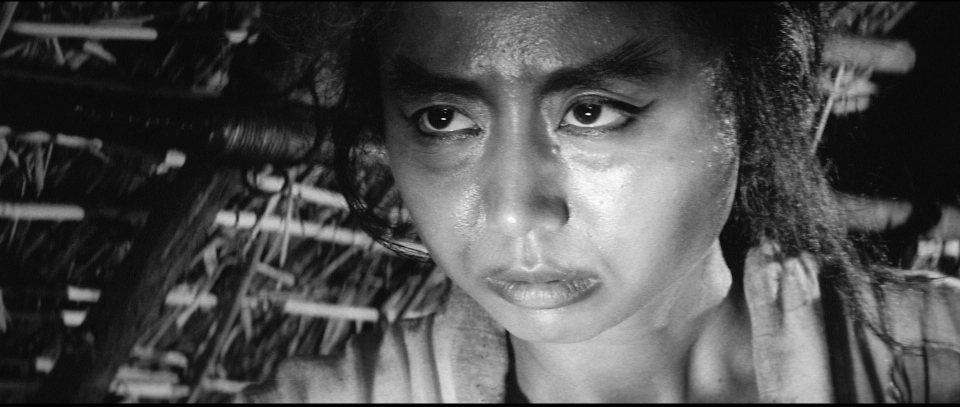 |
|
1) Eureka - MOC - Region 2 - PAL TOP 2) Criterion - Region 0 - NTSC - SECOND3) Asmik Ace - Region 2 - NTSC - THIRD 4) Masters of Cinema - Region 'B' - Blu-ray FOURTH 5) Criterion - Region 'A' - Blu-ray BOTTOM |
 |
|
|
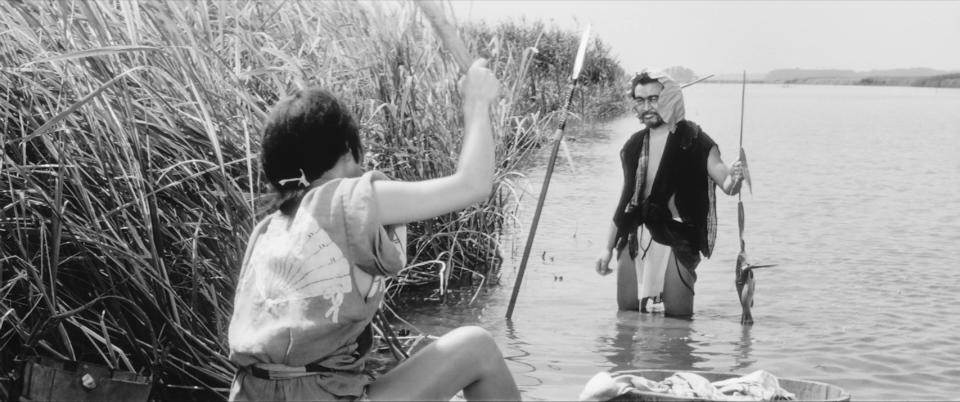 |
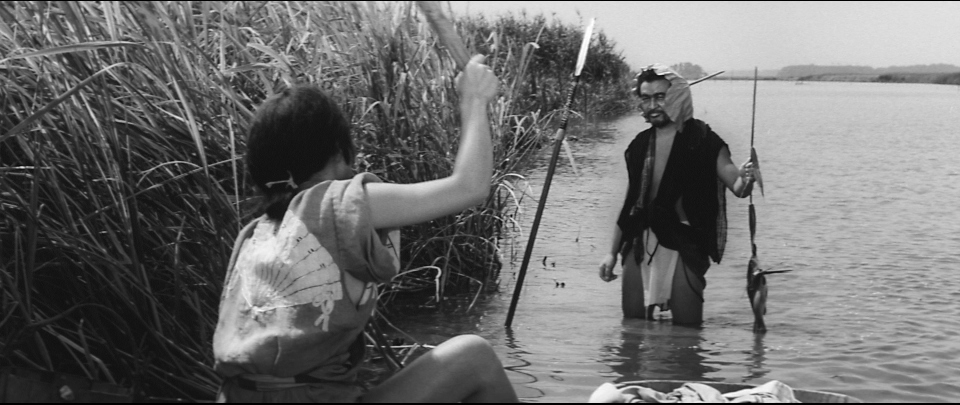 |
| Box Covers |
 |
|
|
|

BONUS CAPTURES: |
| Distribution |
Eureka Masters of Cinema Region 2 - PAL |
Criterion Collection - Spine # 226 - Region 0 - NTSC |
Pioneer / Asmik Ace Region 2 - NTSC |
Masters of Cinema - Spine #55 Region 'B' - Blu-ray |
Criterion Collection - Spine # 226 Region 'A' - Blu-ray |
o Shindō Criterion


